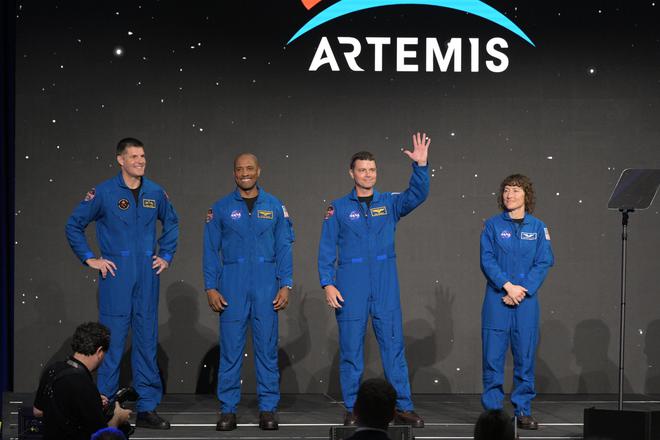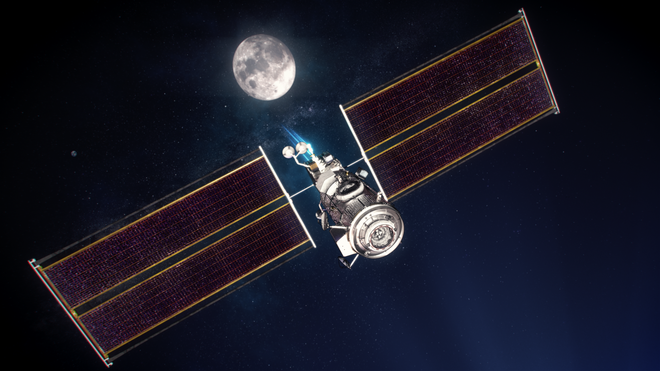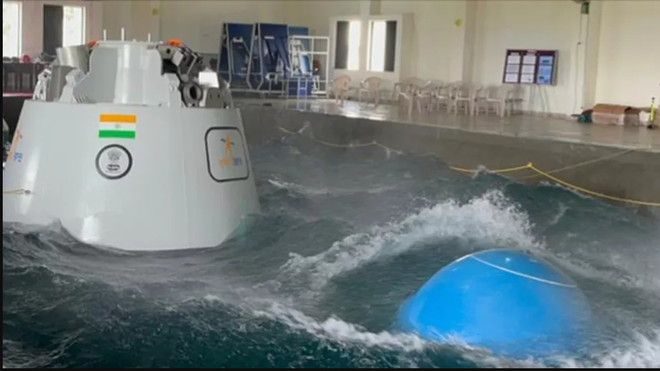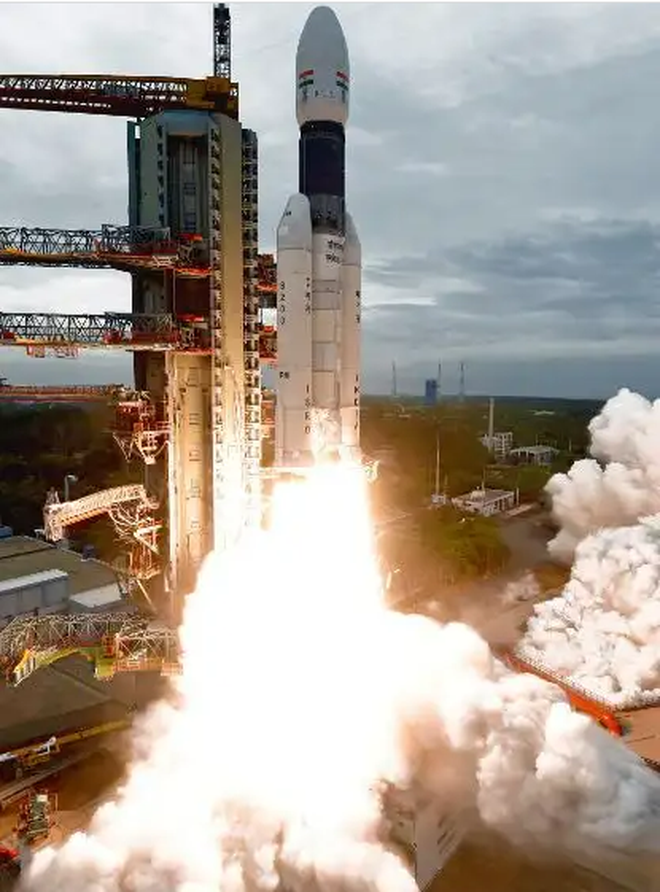‘Even the sky is not the limit,’ declared Prime Minister Narendra Modi on June 25, Thursday, while announcing that India has decided to join the Artemis Accords, marking a leap in Indo-US space cooperation.
“By taking the decision to join the Artemis Accords, we have taken a big leap forward in our space cooperation,” said Mr. Modi at a news conference at the White House with US President Joe Biden. India joins 26 other countries who have signed the non-binding treaty for space exploration of the moon, Mars and beyond.
As per the joint statement released by the White House, the two nations’ space agencies — National Aeronautics and Space Administration (NASA) and Indian Space Research Organisation (ISRO) — will jointly send Indian astronauts, trained at the Johnson Space Center in Houston, Texas, to the International Space Station (ISS) in 2024. The statement also mentions India’s signing of the Artemis Accords to advance a common vision of space exploration for the benefit of all humankind.
What are the Artemis Accords?
Based on the Outer Space Treaty of 1967 (OST), the Artemis Accords were established by the U.S. State Department and NASA with seven other founding members — Australia, Canada, Italy, Japan, Luxembourg, the United Arab Emirates, and the United Kingdom— in 2020 for setting common principles to govern civil exploration and use of outer space, the moon, Mars, comets, and asteroids, for peaceful purposes.
The 27 signatories to the Artemis Accords are the US, Australia, Canada, Italy, Japan, Luxembourg, the United Arab Emirates, the U.K,. Ukraine, South Korea, New Zealand, Brazil, Poland, Mexico, Israel, Romania, Bahrain, Singapore, Colombia, France, Saudi Arabia, Rwanda, Nigeria, Czech Republic, Spain, Ecuador, and now, India.
Commitments under the Accords
Under the Artemis Accords, the signatories will implement memorandum of understanding (MOUs) between governments or agencies to conduct space activities for peaceful purposes in accordance with international law. They are committed to share national space policies transparently with one another and scientific information resulting from their activities with the public and the international scientific community on a good-faith basis.
The signatories recognise common exploration infrastructure including fuel storage and delivery systems, landing structures, communications systems, and power systems to enhance scientific discovery and commercial utilisation. The members will have to render necessary assistance to personnel in outer space who are in distress.
All relevant space objects must be registered by the signatories and they must openly share scientific data in a timely fashion. Private sectors are exempted from sharing scientific data unless they are performing space activities on behalf of a signatory. The members are expected to preserve outer space heritage, including historic human or robotic landing sites, artefacts and evidence of activity on celestial bodies.
The utilisation of space resources, including recoveries from the surface of the moon, Mars, comets, or asteroid should be done in support of safe and sustainable space activities. The usage of such resources by a signatory must not interfere with that of another signatory and information regarding the location and nature of space-based activities must be shared to avoid this. Signatories must notify and coordinate with one another to create a ‘safety zone’ to avoid any such interference.
Members must plan for mitigation of orbital debri, including safe and timely disposal of spacecraft at the end of missions. They must also limit the generation of new, long-lived harmful debris to a minimum.
The principles under these Accords must be periodically reviewed and potential areas of future cooperation must be discussed.
What are the activities under Artemis programme?
The initial three missions of the programme are Artemis-I, II and III.
Under Artemis-I, NASA launched its spacecraft ‘Orion’ on its indigenously built super heavy-lift launch vehicle (SLS) directly to the moon on a single mission. On November 16, 2022, the SLS carrying Orion commenced its first uncrewed integrated flight test from NASA’s Kennedy Space Center, Florida. The Orion completed a lunar flyby, performing a half revolution around the moon before returning to the earth’s orbit and splashing down on December 11, 2022, in the Pacific Ocean.
In 2024, NASA’s Artemis-2 programme will commence, with a crew of four astronauts onboard the SLS performing multiple manoeuvres on an expanding orbit around the Earth on the Orion, conducting a lunar flyby and returning to the earth. The crew will perform tests on systems like communication, life support, and navigation and perform a proximity operations demonstration which will help in docking and undocking for Artemis-III.

The four member crew finalised by NASA are Reid Wiseman (commander) from Canada, Victor Glover (pilot), Christina Hammock Koch (mission specialist) and Jeremy Hansen (mission specialist) from the US. The mission will create history by sending the first woman and person of colour to land on the moon. Currently, the crew is undergoing training while different modules of Orion are undergoing tests.
Under Artemis-III, humans will return to the moon in 2025. This mission will witness the four-member crew land on the moon, conduct a week-long lunar exploration, perform a lunar flyby, and return to earth.

In future missions under the Artemis programme, NASA aims to land a second crew on the moon in 2028 and establish a Lunar Gateway station where astronauts will land in 2029. NASA also aims to set up a permanent base on the lunar surface and then proceed to send astronauts to Mars.
India’s space/moon mission & role in Artemis
India’s space agency ISRO already had two programmes — Chandrayaan and Gaganyaan — before the country signed the Artemis Accords. Under Gaganyaan, ISRO will demonstrate its capability for human spaceflight to Low Earth Orbit (LEO) and a safe return to the earth. The mission has two unmanned flights and one manned flight planned to the ISS.

While the first unmanned mission was to be launched in 2022, the COVID-19 pandemic delayed the schedule by a year. Now, the first unmanned flight will happen at the beginning of next year and the crewed mission is projected to be done by the end of 2024. The four astronauts selected for the mission completed their generic space flight training at Gagarin Cosmonaut Training Centre, Russia, and since then have been in India undergoing tests and physical training. They will be sent for final training to the Kennedy Space Centre, US, in 2024.
India’s second attempt to ‘soft land’ on the moon — Chandrayaan-3 — is set to launch in mid-July this year. ISRO chief S. Somnath said that the Chandrayaan-3 vessel has been moved from U.R. Rao Satellite Centre in Bengaluru to Satish Dhawan Space Centre in Sriharikota. The initial operation checks of the satellites, launch vehicle, orbiter, lander and rover are ongoing. Similar to Chandrayaan-2, India will attempt to launch an orbiter to the lunar orbit and land a rover on the south pole of the lunar surface.

With India signing the Artemis Accords, it will be a part of the US’ attempt to land humans on the moon by 2025. Moreover, ISRO is likely to collaborate on further Artemis missions including the Lunar Gateway, Mars landing and establishing a permanent lunar base. India also aims to establish its own space station similar to the ISS and China’s Tiangong space station.
Hailing India’s decision to sign the Artemis Accords, Ashok GV, Director, Legal Affairs of Spaceport Sarabhai, an Indian space think tank, said that it could provide a foundation for more streamlined and liberal exchange of technology and a flow of capital for India’s space program. “It provides impetus to India’s aspirations to be a key influencer in humankind’s efforts to mark its presence in the moon and beyond,” he said.







